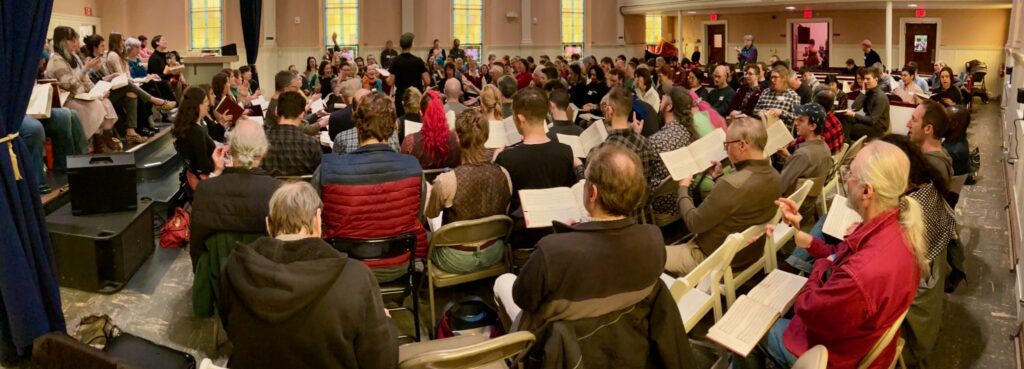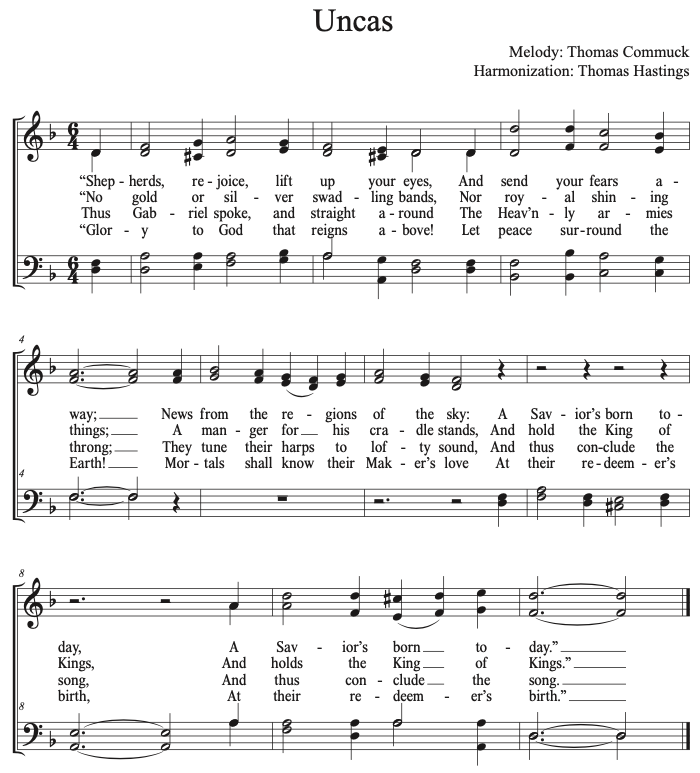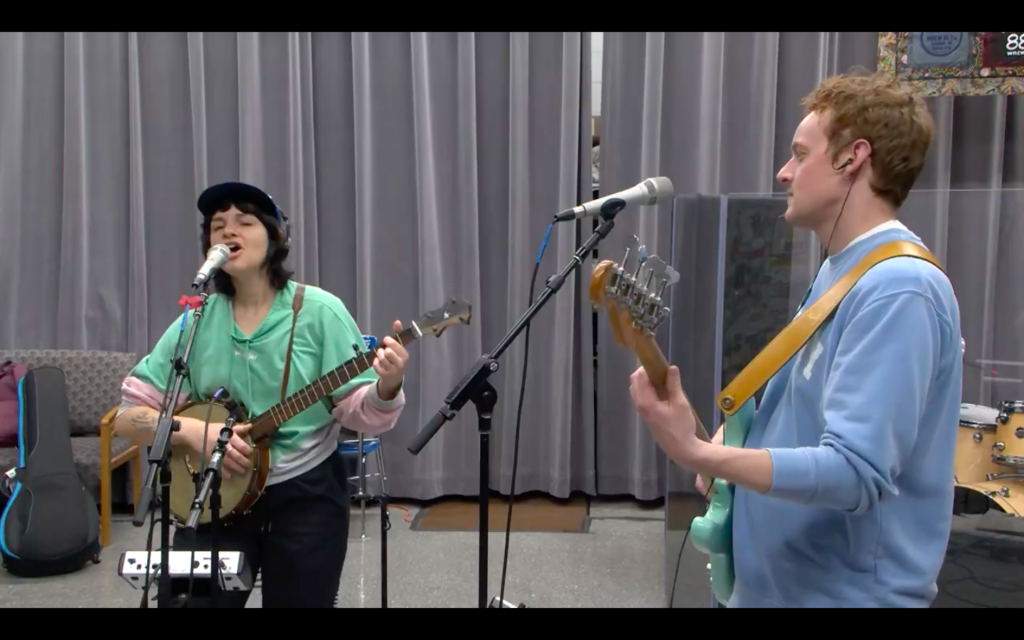“The Earth Is My Mother,” no. 1073 in the Unitarian Universalist hymnal Singing the Journey, turns out to be one of those problematic songs.
The first problem is — who wrote it? In Singing the Journey, it’s attributed to “Native American, from Songs for Earthlings, ed. Julie Forest Middleton, copyright 1998 Emerald Earth Publishing.” Let’s look first at whether it’s truly a Native chant, and second, who might own the copyright.
On the “Rise Up and Sing” website, Annie Patterson and Peter Blood note: “It has been suggested that this chant is based on a Lakota (Plains) chant and elsewhere as coming from the Hupa tribe of Northern California.” But, as they point out, it’s almost impossible to evaluate such claims. Patterson and Blood also write: “We urge people to consider carefully issues of cultural and religious appropriation in utilizing material like this. At the very minimum acknowledge the issues involved when you utilize songs of this kind.” To put it more bluntly: if it’s really a sacred chant from a specific indigenous tradition, then you probably shouldn’t be singing it unless you know the actual social context from which the chant comes, and whether it’s a chant that has a specific cultural meaning that you should respect. And if it’s not actually a sacred chant from a specific indigenous tradition, then if you sing it you look like you’re “playing Indian.”
Next, let’s think about who owns the copyright. If it is in fact a chant from an indigenous tradition, then either the copyright should be held by a person from that indigenous tradition who composed it, or it’s from a folk tradition in which case it’s in the public domain.
There’s a third possibility, one which I believe is the most likely: the chant came out of the New Age community and/or the environmental activist community. These two communities overlapped a good deal, and both generated a lot of creative ferment in the late twentieth century. A quick search of documents on Google Books leads me to believe this third possibility is likely. Prior to 1990, I found a couple of definite references to this chant being used by environmental activists.
In the earliest appearance I can find, the lyrics to this chant were printed in The International Permaculture Seed Yearbook, 1983, along with the notation, “The Earth Chant is based on a Native American chant with the portions starting ‘the moon’ added by Dawn Seed. Reproduction and singing of the chant is encouraged,” i.e., the publishers were not claiming copyright. (The moon portion goes like this: “The moon is our grandmother, we must take care of her….”) Then a few years later, the lyrics of the song appeared as part of the testimony given by environmental activist Robin Gould of Santa Fe, New Mexico, during a public hearing held by the U.S. Department of Energy for an Environmental Impact Statement for the Waste Isolation Pilot Plant Project, held on 17 June 1989 in Santa Fe (see p. 46 of the transcript, lines 3-22). Gould apparently sang the song during the public hearing.
So I’m guessing that this chant was in wide circulation among (White) environmentalists and (White) New Agers at least as early as 1983, maybe going back to the 1970s. Note that the phrase “the earth is our mother” dates back even further. For example, the phrase “The Sky is our father, the Earth is our mother” appears in anthropologist James George Frazer’s book The Worship of Nature: The Worship of the Earth, the Sky, and the Sun (London: Macmillan & Co., 1926). Interestingly, Frazer attributes the phrase, not to indigenous North Americans, but to the Lo-lo p’o people of China. And many others in the West have used the phrase “the earth is our mother” — not just anthropologists, but also socialists, spiritualists, Christians, etc., going back twenty-five hundred years to Lucius Junius Brutus, the founder ancient Rome.
Thus the lyrics to the verses predate Julie Forest Middleton’s 1998 publication of them. Mind you, I don’t fault Middleton for copyrighting the version she printed in her song collection. It’s fine to copyright typesetting and arrangements. But the lyrics predate her 1998 publication by at least a decade, and the long history of the phrase “the earth is our mother” means the lyrics of the verses are almost certainly in the public domain.
As for the non-lexical vocables of the chorus — usually rendered as “Hey, yunga, ho, yunga…” or as “Hey, yanna, ho yanna…” — their origins are obscure. These vocables are somewhat consistent with some Native American music. David McAllester, in an article titled “New Perspectives in Native American Music,” notes: “In traditional Native American music, many songs may be entirely vocabalic and a majority are largely so with only a line or two of translatable text. The vocables are part of a Native American view that a song does not need many, or even any, lexical words to communicate its meanings” (Perspectives of New Music, vol. 20, no. 1/2, Autumn, 1981 – Summer, 1982, p. 434). It would be very difficult to determine if the lyrics to the chorus are actual Native vocables (which could be cultural misappropriation), or vocables designed to sound like Native vocables (which would be “playing Indian”).
As for the melody, it could be a traditional Native American melody, borrowed from somewhere. Or it could have been based on someone’s hazy recollection of a Native American chant. Or it could have been composed by non-Native singers (and it does sound a lot like many of the chants that were emerging in Neo-Pagan and New Age circles in the late twentieth century). Maybe someday someone will figure out where this melody came from, but for now I have to conclude that we just don’t know.
So should we sing this chant, or not? Even if it’s in the public domain, the criticism leveled by Annie Patterson and Peter Blood remains — singing this chant could be cultural misappropriation, or it could be “playing Indian.” Either way, I don’t think we should be singing it.
Updated and substantially rewritten 1 Oct. 2023, based on additional research.



